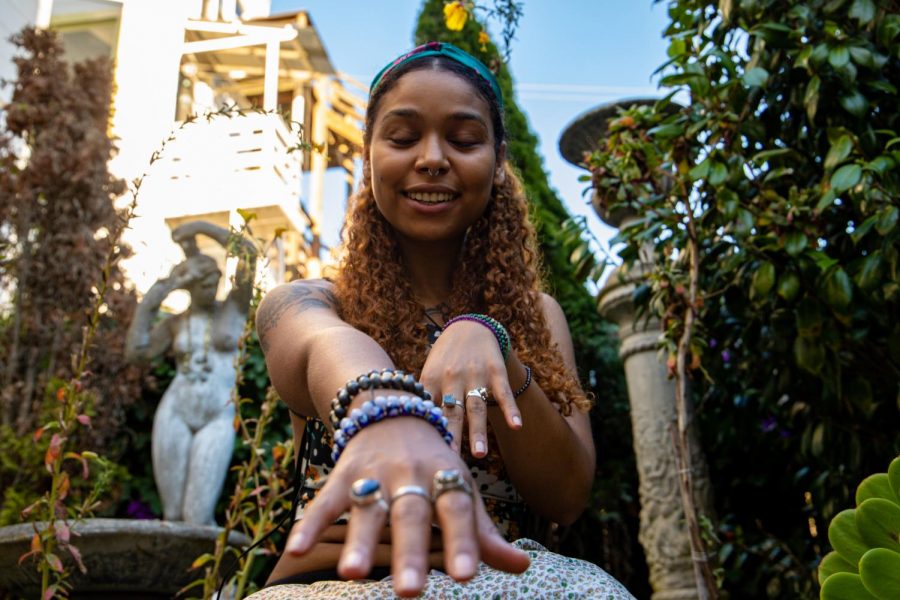Holy common ground
Highlighting the connections between religions in a time of division
Gaia the Empress shows off her jewelry, which carries spiritual significance, in the garden of Sword and Rose, after purchasing new gemstones on October 14, 2020.
While meandering through the meditation garden that sits on the coastline of Southern California, Sister Sarala, a nun in the Self Realization Fellowship’s (SRF) monastic order, explained her belief that followers of polytheistic religions are simply worshiping different aspects of her one God.
The international nonprofit group believes all religions have much more in common than one might assume. “The society seeks to foster a spirit of greater harmony and goodwill among the diverse people and nations of the world, and a deeper understanding of the underlying unity of all religions,” its website reads. It once touted the name “Self Realization Fellowship: Church of All Religions,” but according to Sarala, they have since dropped the latter part for convenience purposes.
Sarala joined the SRF in the ’70s after reading “Autobiography of a Yogi,” by Paramahansa Yogananda. The book is considered one of the best spiritual books of the 20th century, according to Harper San Francisco. 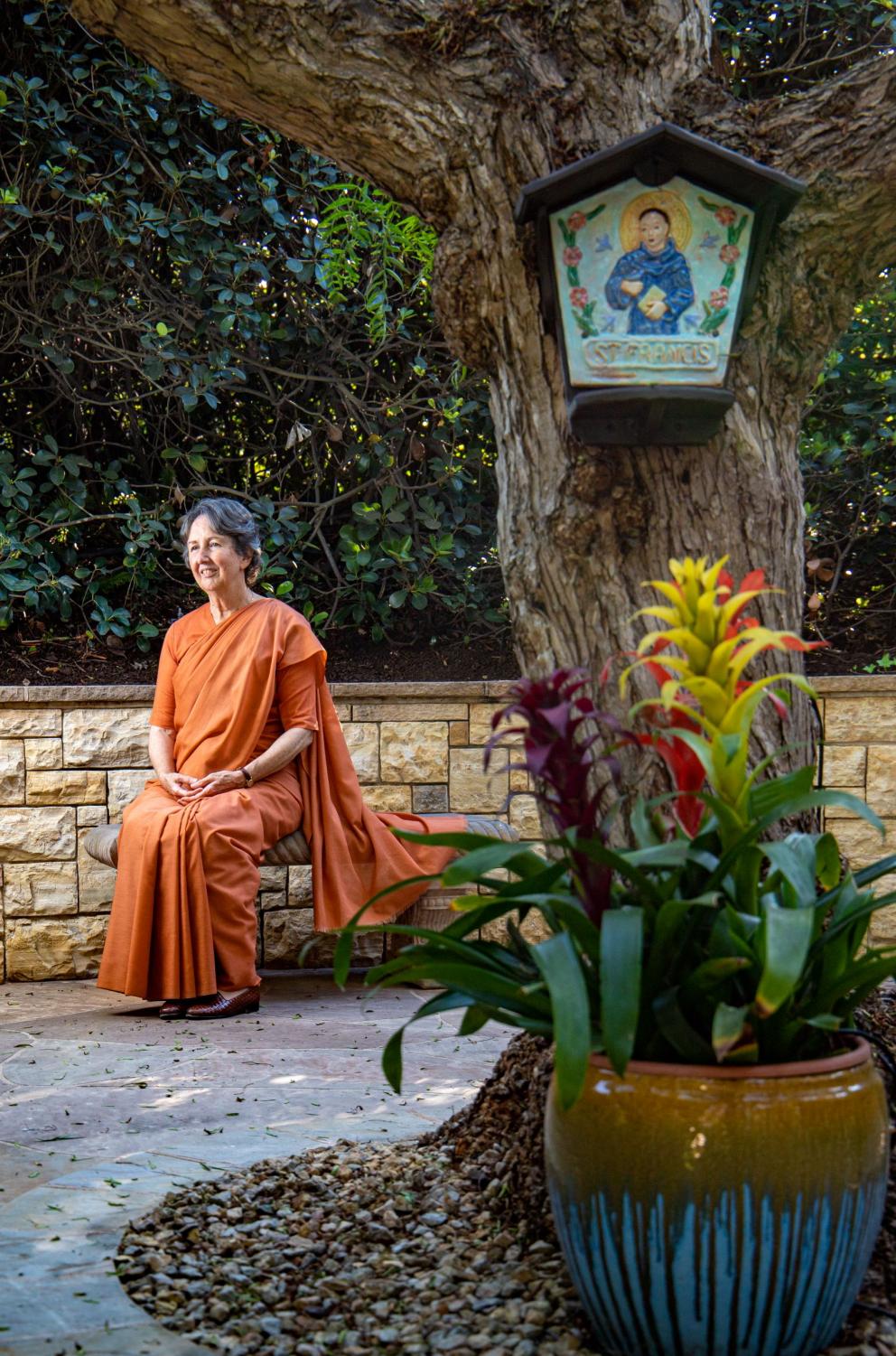
Sarala joined the SRF in the ’70s after reading “Autobiography of a Yogi,” by Paramahansa Yogananda. The book is considered one of the best spiritual books of the 20th century, according to Harper San Francisco.
The SRF has multiple levels of devotion. The most dedicated believers wear saris, (wrapped dresses similar to robes) and reside on the temple grounds. They practice abstinence, dedicating their life to both Jesus Christ and the practice of yoga.
Many Americans begin searching for a connection to their spirituality around this time of year, considering internet searches for “church” reach highs when Easter and Christmas are near. According to a Pew study, 55% of U.S. adults say they celebrate Christmas as a religious holiday. However, 90% say they mark the holiday, regardless of religious identity.
Religion can be linked to at least 123 wars around the world while almost three-fourths of Americans identify as religious, according to Encyclopedia of Wars and Pew Research Center’s religious landscape study.
Amid the coronavirus pandemic, a taxing and divisive election year and social unrest, many spiritual leaders are working to bring both peace of mind and interfaith understanding to their followers.
“This is a particularly difficult time to see people so angry,” said Diane Keyes, the church administrator of the Center for Spiritual Living (CSL). The organization aims to teach “principles for personal growth and global transformation” while “honoring all paths to God.”
Keyes has worked at various churches, gathering spiritual practices from each. She believes that prayer can help people make fewer fear-driven decisions. The administrator and author believes that prayer helps humans live in “the realm of possibility,” and that focusing on positive possibilities “reduces fear to nothing.”
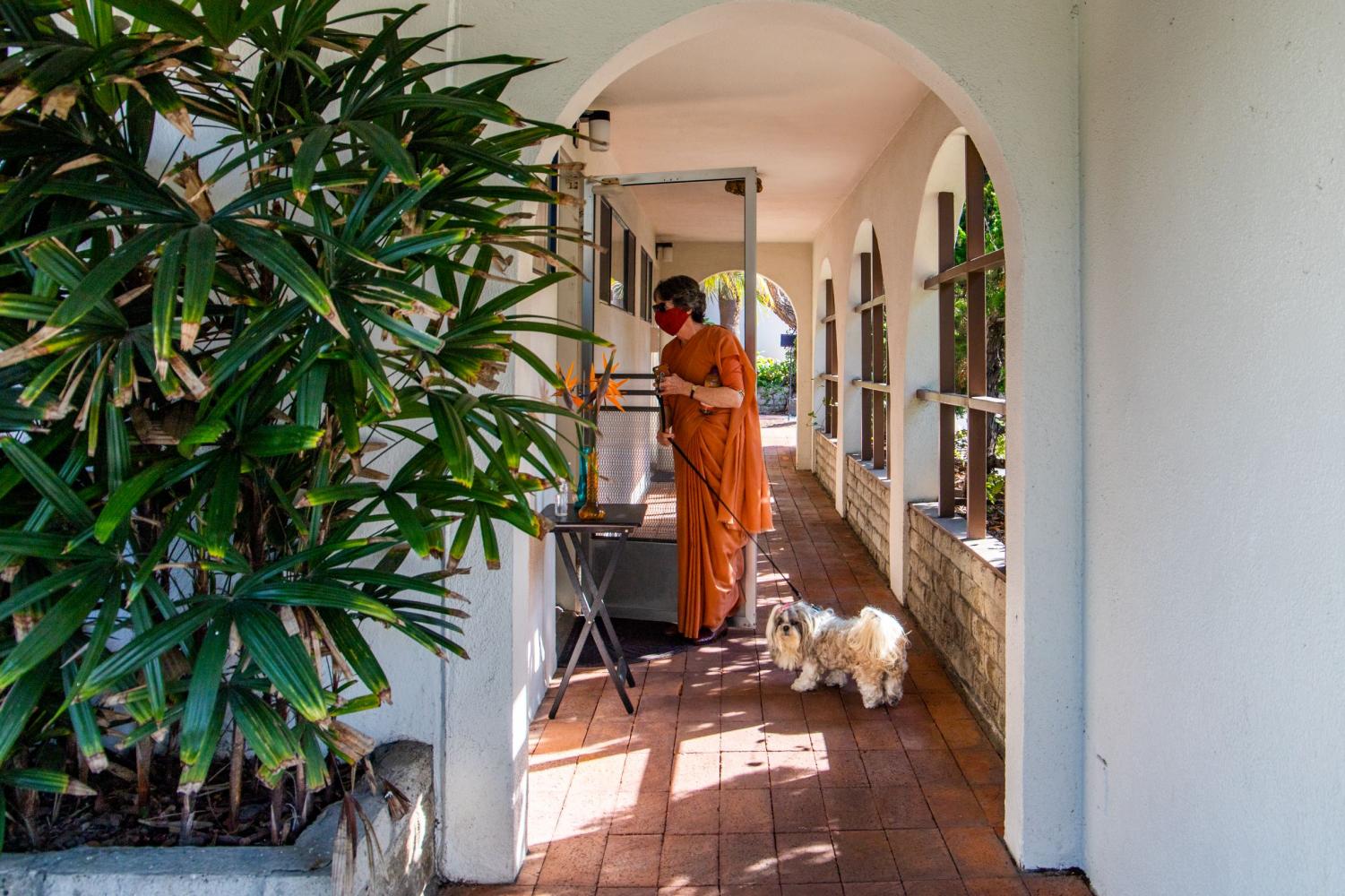
The SRF has similar values. The group’s primary focus is on the intrinsic value of meditation as a way to “experience a deepening interior peace and attunement with oneself and with God” — or “Nirvana,” as Buddhists would define it.
The Garden of Liberation, located in Bangkok, Thailand, is one of the most revered Theravada Buddhist temples in the country. The walls bear resolutions that echo the mission of the SRF and CSL: “To help everyone penetrate the heart of their own religion” and “to create mutual good understanding between all religions.”
The third resolution and the point of this spiritual unity, for Theravada Buddhists, is “to work together to drag the world out of materialism.”
Yogananda, the founder of SRF, aimed to balance Western material growth and Indian spirituality. Yogananda arrived in the U.S. in the ’20s from India, where Hinduism is the dominant religion.
The Hindu belief in reincarnation is shared by both the SRF and many Wiccans.
According to Khaia Ritter, who’s preferred name is Gaia the Empress, Wicca is the pagan counterpart and the religion of many witches. The religion allows room for varying beliefs about the afterlife.
Gaia, founder and high priestess of the Bay Area Brujx, explained that, “Witchcraft is commonly misclassified as a religion, when it’s really a practice, similar to yoga or tai chi. Wicca is the religion.”
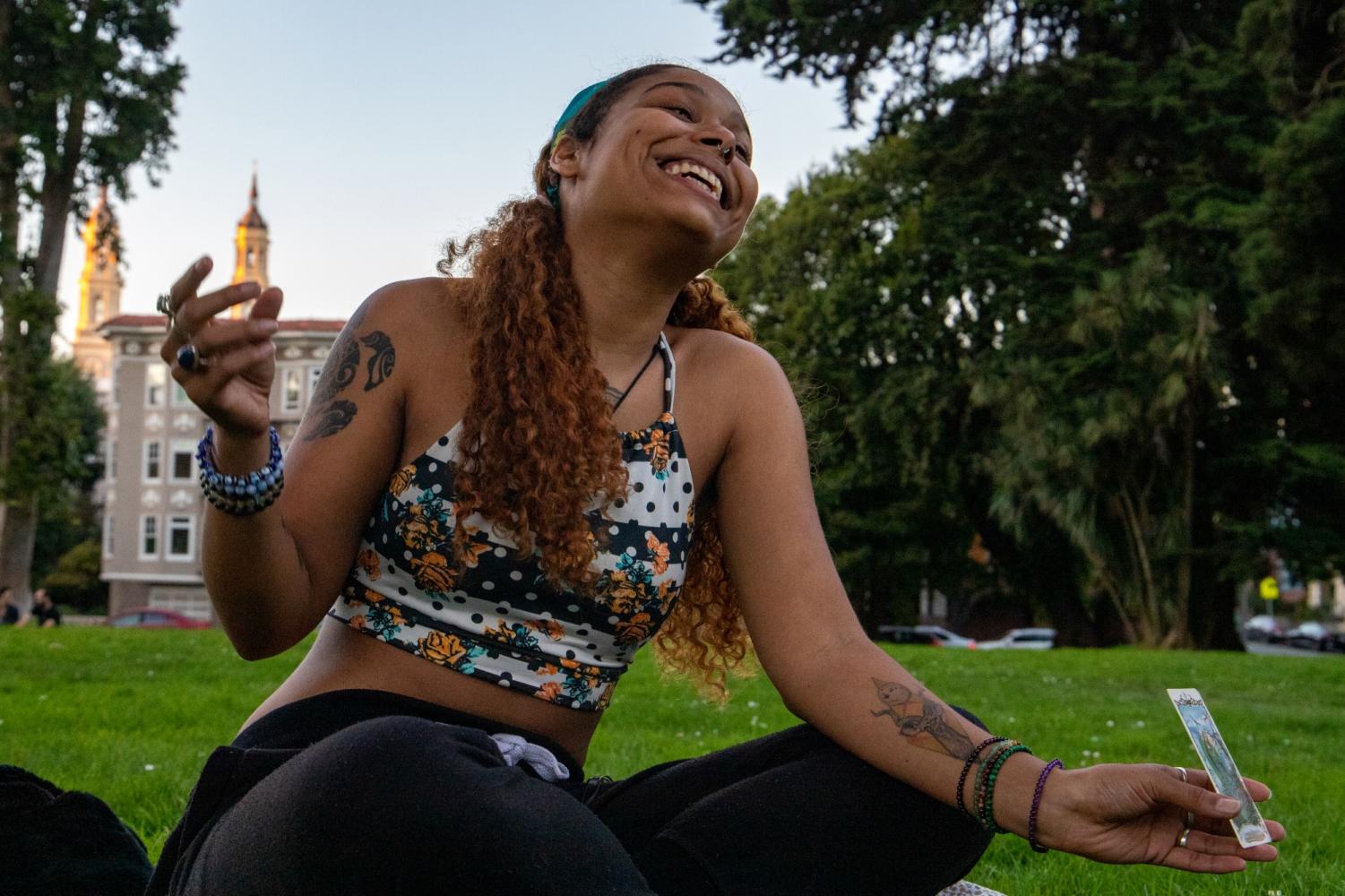
Gaia believes that after death, humans are reincarnated to understand certain lessons about the world.
“I just believe that we are sent here as many times as we need to, to understand the individual ways that we can manifest and create beautifully, most effectively, and most positively for the whole Earth.” Gaia said.
Wicca is defined by a strong relationship to the Earth and nature. A hummingbird visited Gaia’s window just as she was explaining the intrinsic connection. She laughed aloud and gleefully exclaimed, “Oh thank thee!”
Wiccans believe they possess a unique responsibility toward the environment.
“We seek to live in harmony with Nature, in ecological balance offering fulfillment to life and consciousness,” according to Principles of Wiccan Belief by the American Council of Witches, published in 1974.
Though the council disbanded later the same year, the document gave clarity to the American public, which was fearful of their spirituality and falsely equated Wiccanism to Satanism. According to Patti Wigington, a Pagan author, educator and licensed clergy, “Satan is a Christian construct, and Wiccans don’t worship him.” In her Wiccan FAQ, she explains that “even the Satanists don’t actually worship Satan, but that’s a whole other conversation.”
The wheel of life, which acts as the Wiccan calendar, follows the Earth’s seasonal patterns. It’s original intention was to help with harvesting food at the most fruitful time, according to Gaia. The wheel of life follows the lunar cycle, similar to the traditional calendar of the Jewish faith. The Hebrew months also follow the phases of the moon, according to the Jewish Museum of London. Both religions refer to holy days as “Sabbaths.”
The Torah, the sacred text of the Jewish religion, is also referenced in religious texts of Christian and Islamic beliefs. Christians might know it as the “old testament.” Judaism, Christianity and Islam are all considered Abrahamic religions, since they share belief in the prophet Abraham. Though these different strains of biblical beliefs have varying ideas regarding following religious profits, they can at least agree on about 929 chapters of text.
According to Aherents, a religious statistics database, followers of these three religions account for more than half of the world’s total population.
“Many people were raised in a faith that no longer works for them… A lot of people have been hurt by their churches.” said Keyes, referencing the many young Americans who have denounced religion in protest of their churches’ treatment of the LGBTQ+ community. But Keyes wants these individuals, and everyone on the spiritual spectrum, to know they’re welcome at the Christ-based community of CSL.
Though the church has moved spaces due to COVID-19, the center in Temecula, California, flew the American flag, Black Lives Matter flag, the earth flag, human rights flag, interfaith flag, peace flag, and rainbow flag above their service space for over five years.
“We honor people wherever they are in their journey, wherever their faith is, to integrate spirituality into daily life,” Keyes explained of the multicultural, multiethnic congregation.
The world contains about 4,300 different religions, yet many people identify outside of an organized religion, and have created their own personal brand of spirituality.
Gaia’s coven includes members of various faiths. One member is both magic-practicing and a devout Christian. Gaia sees no conflict in combining religious beliefs and practices together. In fact, she can’t see how it could be wrong.
“God is not a judgmental entity. That is written in every textbook that mentions a god.” Gaia said. “Your God does want you to grow. Your God does want you to access the best parts of yourself. That is really what magic is: Accessing the highest working parts of you, and saying to that person, ‘Whatever you dream, you can create. All the thoughts in your mind that seem so unintelligible, you can make a reality,” Gaia said. “Understand that you’re not stepping on anybody’s toes by recognizing the power that God gave you, that God gave all of us, that God gave to the whole universe. Because creation is magic. You are made with magic. You’re made with love. You are made in the image of a God who is a magical being, and who shows their magic through the powers of creation on a daily basis. In no way, shape, or form, would that God ever be angry with you if you just took a second to stand in the power of their creation, and understand that the energy that is leftover can be used to make and manifest your dreams.”
Holy common ground photo story
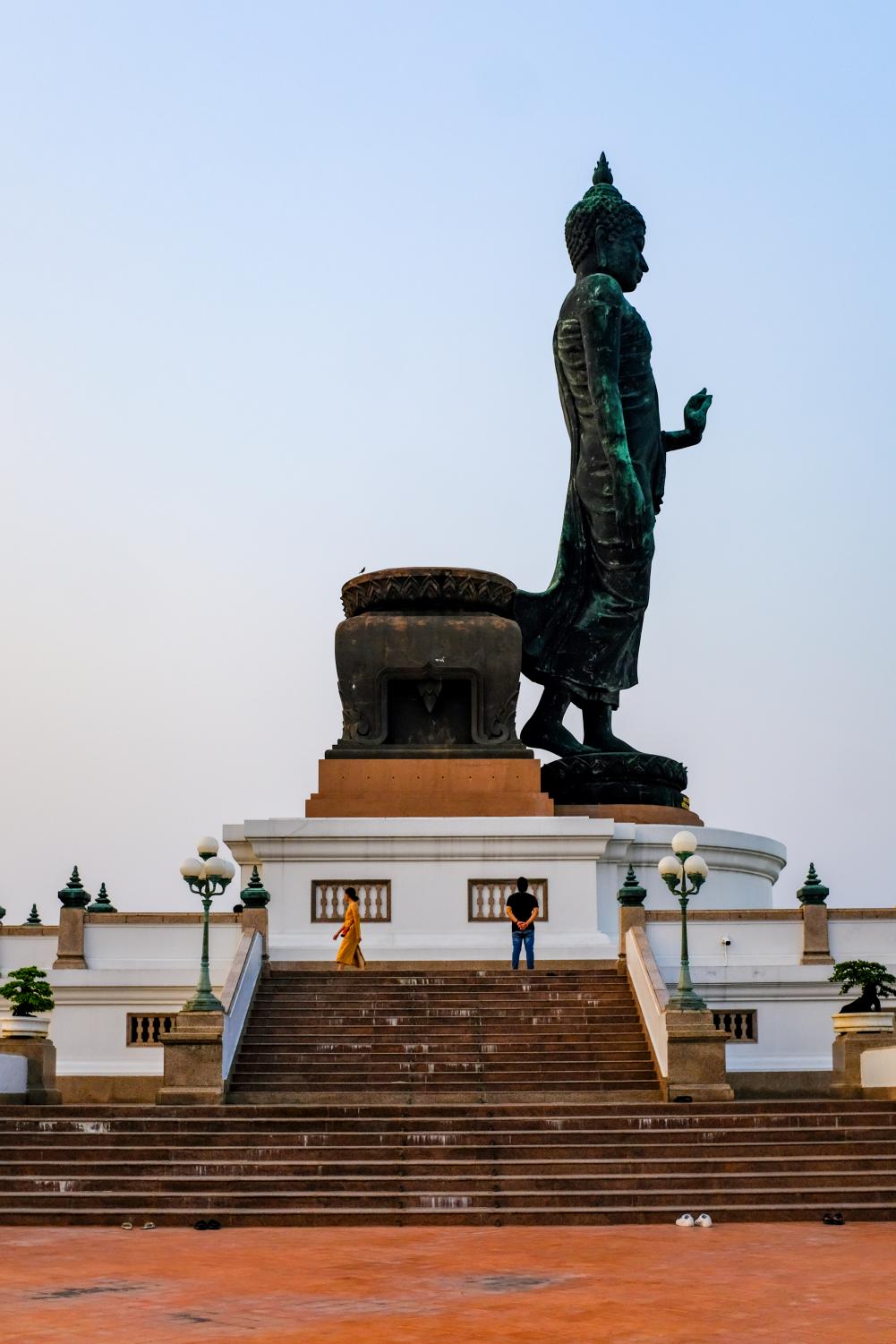

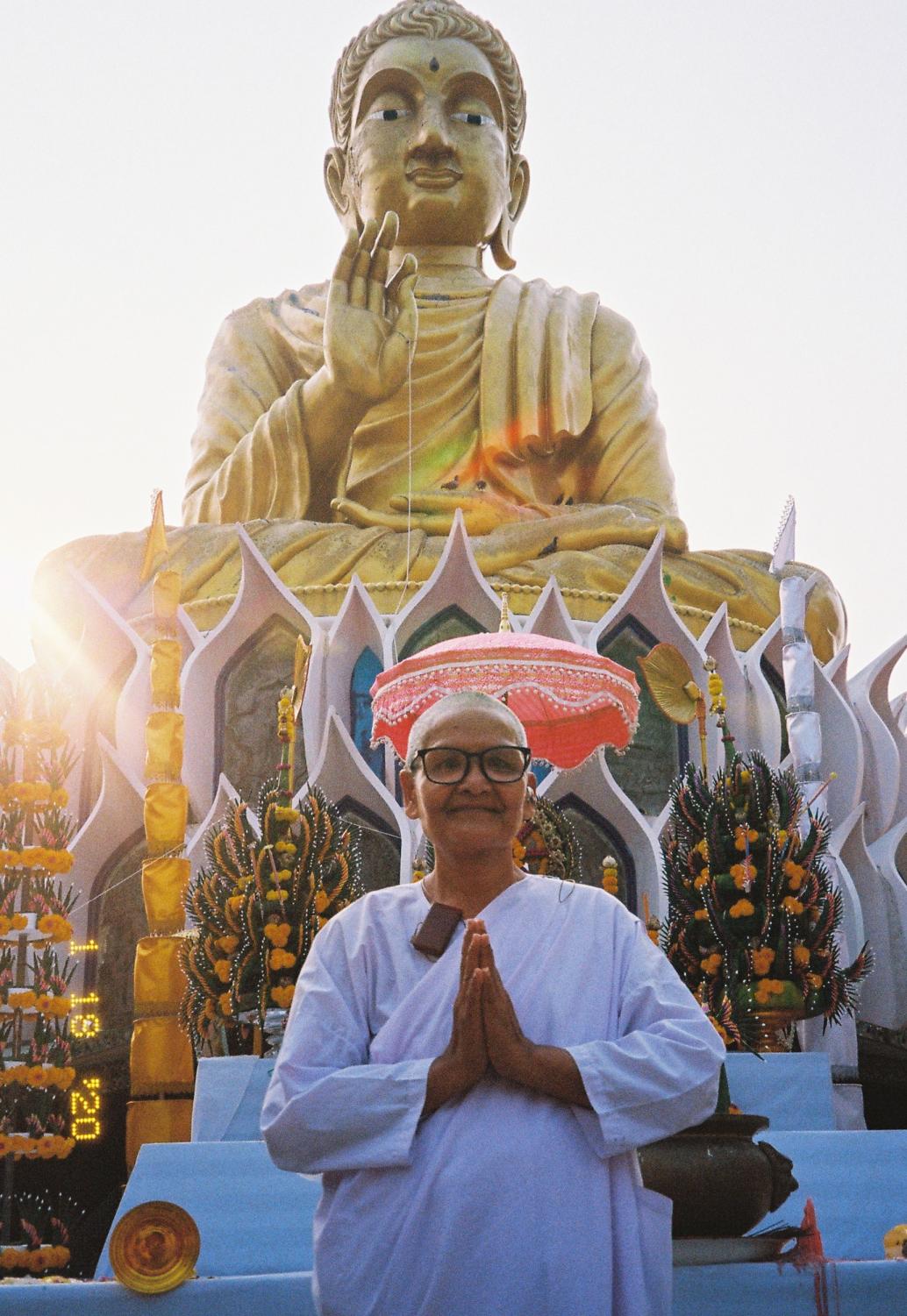

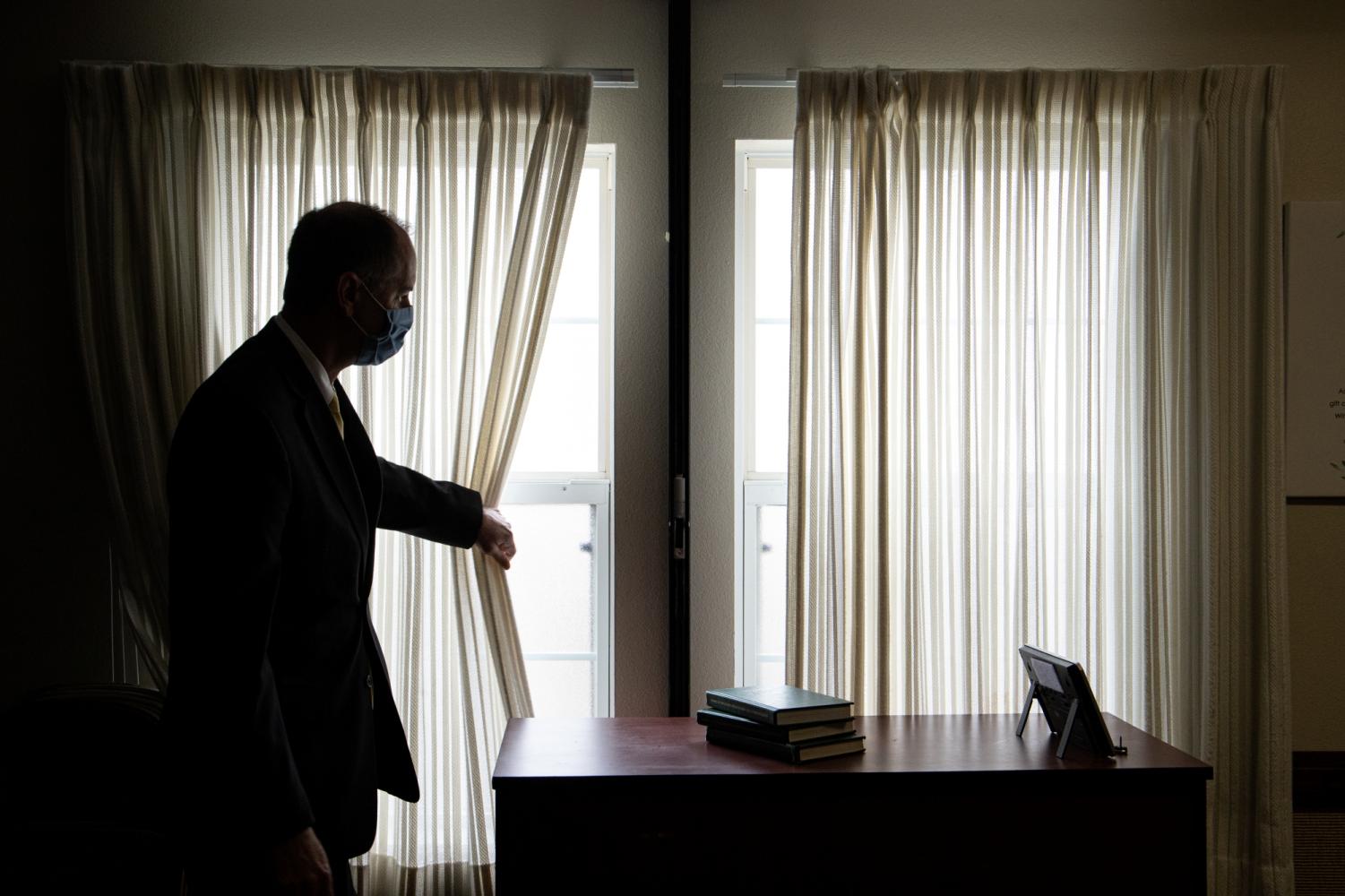
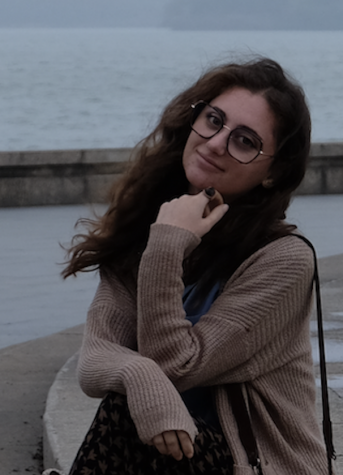
Managing Editor
[email protected]
@camilleelizecohen
Camille is a photographer, journalist, and lover of symmetry. She likes to read fiction...


